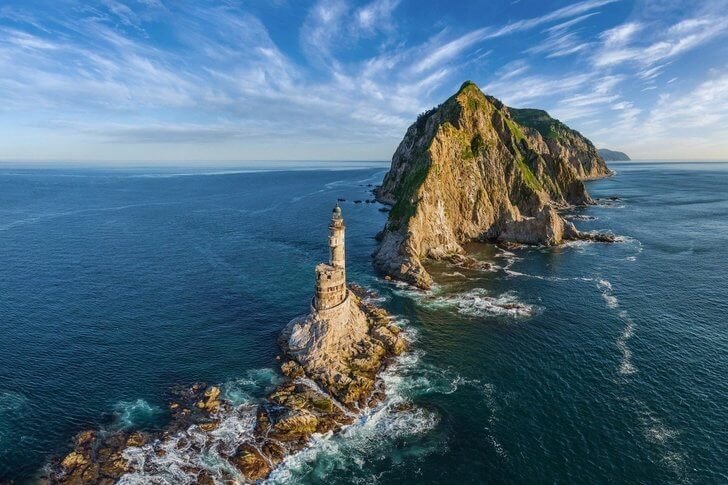Sakhalin is the true end of the world, a place where the mighty Pacific Ocean dominates, breaking powerful waves against the coastal rocks. The incredibly picturesque and remote island attracts adventurers who are not afraid of difficulties and lack of civilization, but who appreciate the beauty of wildlife and solitude.
At first glance, Yuzhno-Sakhalinsk is a typical, unremarkable city with Soviet architecture and a lack of significant historical sights, but on the other hand, it is a real mix of cultures, traditions and dialects. Who is not here: Japanese, Koreans, Americans, Russians. For the exotic, it is better to go to the local market, where you can buy seafood delicacies and plunge into the atmosphere of a busy port.
What to see and where to go in Yuzhno-Sakhalinsk?
The most interesting and beautiful places for walking. Photos and a short description.
- Museum of Local Lore
- Mountain air
- Lenin Square
- Glory Square
- Memorial complex Victory
- Museum of Railway Engineering
- Art Museum
- Museum of the Book of A.P. Chekhov Sakhalin Island
- Theater Center named after A.P. Chekhov
- Sakhalin Puppet Theater
- Cathedral of the Nativity
- Resurrection Cathedral
- Sakhalin Zoobotanical Park
- Park named after Yu. A. Gagarin
- Chekhov Peak
- Mount Frog
- Lake Tunaicha
- Cape Giant
- Cape Crillon
- Cape and lighthouse Aniva
Museum of Local Lore
Looking at the building of the local history museum, the question arises - what is it: the palace of the Japanese nobility or is it still a place where expositions are exhibited? This is not surprising, since the structure was built in 1937 in the traditional teikan-zukuri style, characteristic of the Land of the Rising Sun at a time when Sakhalin Island was under the jurisdiction of the Japanese authorities. The expositions of the museum are quite diverse. During the tour, you can learn about nature, the history of indigenous peoples, the culture and development of the region.

"Mountain air"
A ski resort and sports complex that, according to one version, has existed since the time of Karafuto prefecture (1905-45). Even then, skiing and ski jumping competitions were held here. In Soviet times, sports competitions were also held in the "Mountain Air", tourists from the Union republics came here. After being abandoned in the 1990s and renovated in the 2000s, the resort has become one of the most modern in Russia.
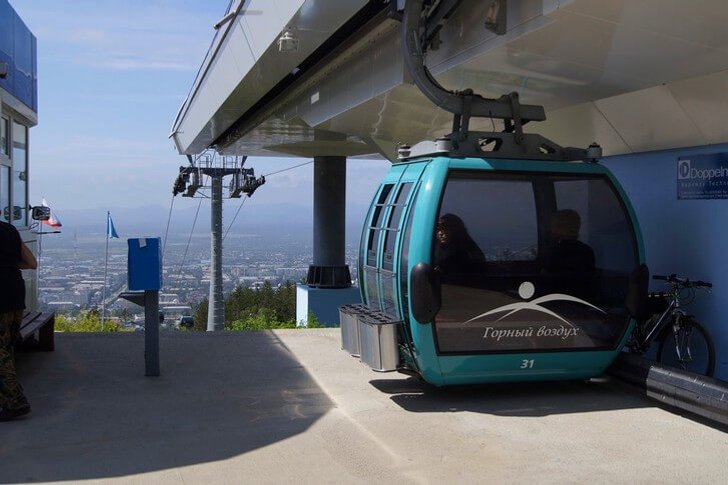
Lenin Square
The central city square with a characteristic landscape: a monument to Lenin, administrative buildings, a railway station, a fountain and paving stones. During the holidays, it becomes the main place for folk festivals and organizing all kinds of events. On weekends, townspeople walk here, foreign tourists visit it as part of a sightseeing tour. In summer, the square turns into a rather pleasant and picturesque place.

Glory Square
The square is a memorial complex erected in honor of the liberation of Sakhalin from the Japanese invaders in 1945. It was built in the 1980s. The ensemble includes a monument to Marshal A.M. Vasilevsky, two sculptural groups depicting a soldier and sailors, the Eternal Glory to the Heroes stele, the Eternal Flame, the Alley of Glory with 14 busts of heroes and a memorial in honor of the soldiers who died during the Afghan and Chechen wars. Also on the square are samples of military equipment.

Memorial complex "Victory"
The complex was opened in 2016 in honor of the 70th anniversary of the Victory. It is a square and a building of a cultural and educational center, where historical expositions dedicated to the Russian-Japanese and Great Patriotic Wars, a conference hall and a cinema are located on 3 floors. The square is located next to the temple under construction, which in the future will also be included in the memorial complex.
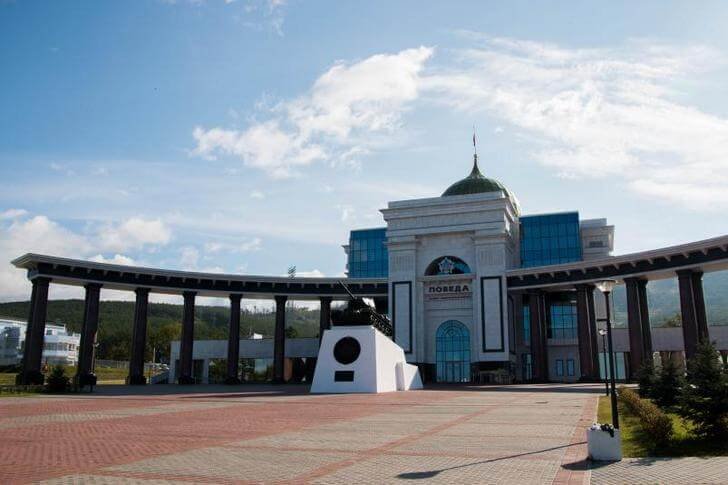
Museum of Railway Engineering
The museum was opened in 2004 on the territory of the Railway Workers' House of Culture. Its exposition covers the period from the beginning of the 20th century, when railway tracks began to be built on Sakhalin. Visitors can see mock-ups of wagons, cross-sectional rails, various devices and equipment used to organize traffic, the uniform of the driver and station attendant. Under the open sky there is a real railway equipment.
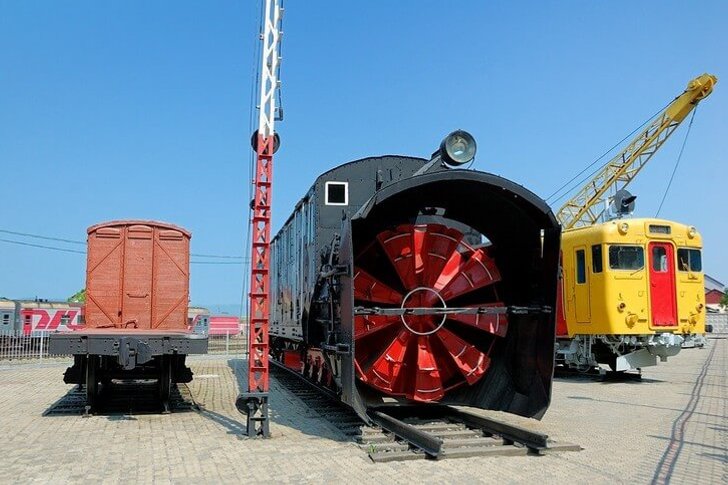
Art Museum
On the territory of the Sakhalin region, the city art gallery is the only museum of this kind. In addition, it is quite young (it was founded in the 1980s). Temporary vernissages are held on the first floor of the museum, while permanent exhibitions are available for viewing on the second floor: “Russian art of the 19th - early 20th centuries”, “Decorative and applied art of Japan”, “Contemporary art of Korea”.
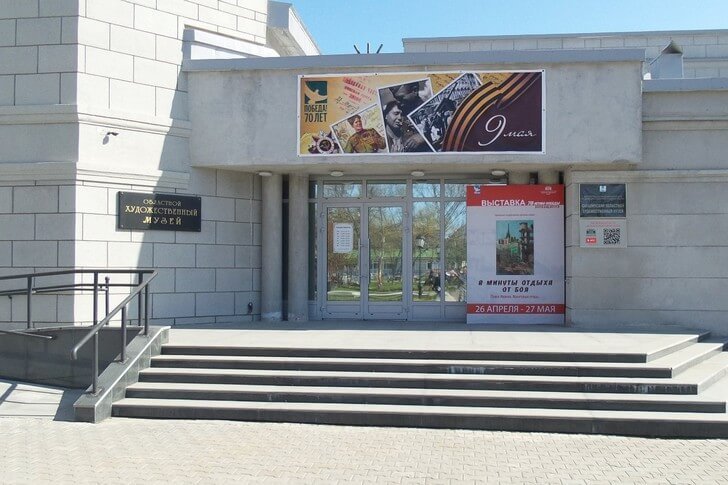
Museum of the Book of A.P. Chekhov "Sakhalin Island"
The museum is dedicated to a very specific event - A.P. Chekhov's trip to Sakhalin in 1890, as a result of which he wrote a whole book. But, contrary to expectations, his collection is quite diverse: paintings, graphics, documents, photographic materials, coins, arts and crafts. There are even personal belongings of members of the Chekhov family and various items that belonged to the exiles (in the 19th century, Sakhalin was a hard labor island).
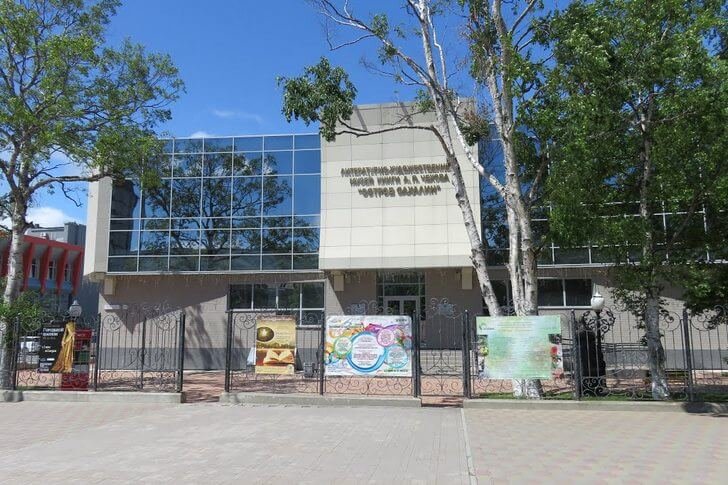
Theater Center named after A.P. Chekhov
The island's main dramatic stage, formed in the 1930s. The name of the writer was given to her in 1954. In addition to performances, a stormy theatrical activity is organized here: festivals, creative laboratories, various cultural projects, competitions. The repertoire is dominated by plays by contemporary authors, although there are also classical productions. There is also an interesting program for children.
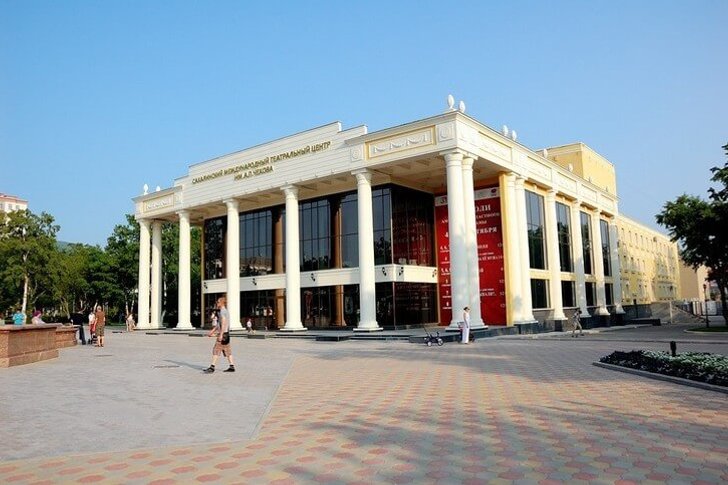
Sakhalin Puppet Theater
The theater was created in 1981 thanks to a team of enthusiasts. At first, the performances were held in the rented premises of the sports club, until 2011 the stage shared space with the pension center, then moved to a new building. The theater often has groups from Moscow, St. Petersburg and other major Russian cities, as well as from abroad, on tour. On the basis of the Sakhalin Puppet Theater, the festival "On the Islands of Wonders" is being held.
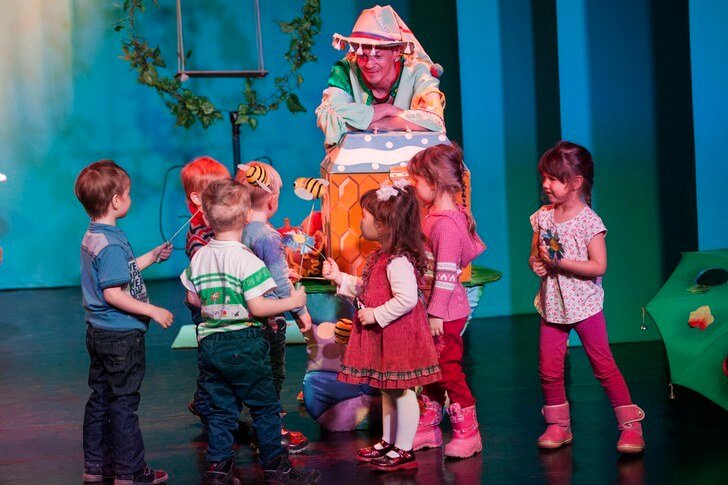
Cathedral of the Nativity
The new cathedral church of the city, erected in 2015 to replace the old one, which, due to its small size, could not accommodate everyone. The cathedral was created in the Novgorod style: five domes placed on a square and facades ending in symmetrical arches. The building is constructed from Indian red marble and granite, as well as ordinary white marble. The outer walls are decorated with mosaics created in Jerusalem.
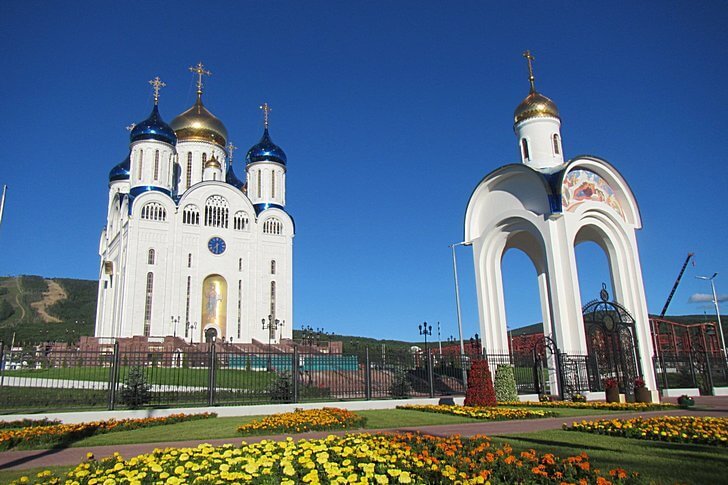
Resurrection Cathedral
The first cathedral church in Yuzhno-Sakhalinsk, built in the 1990s. For quite a long time, Christian churches were not built on Sakhalin at all, since from the beginning of the 20th century the island belonged to Japan, and since 1945 it became part of the USSR, which zealously fought against religion. The revival of temple construction on Sakhalin happened just in the 1990s. A significant part of the funds for the work was donated by the townspeople.
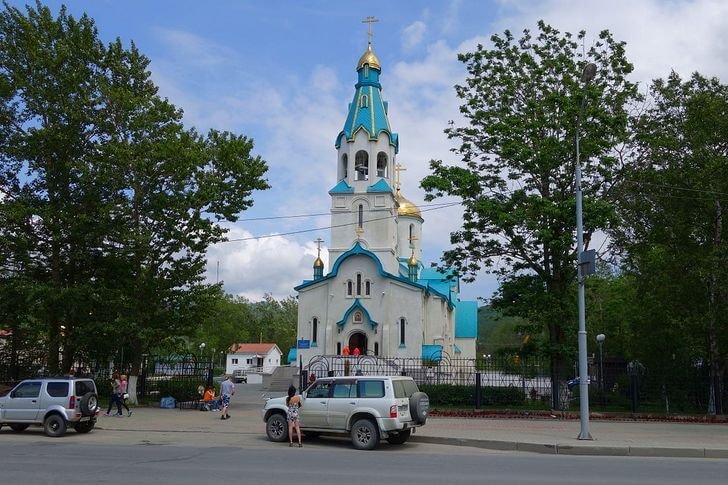
Sakhalin Zoobotanical Park
One of the largest zoos in the Far East, founded in 1993. More than 170 species of animals (500 individuals) live in it, dozens of which are listed in the Red Books of Russia and the world. The rarest representatives of the fauna are: the Ussuri bear, the African lion, the vulture turtle, the raccoon dog, the Amur tiger, the Far Eastern leopard and other rare and endangered species.

Park named after Yu. A. Gagarin
The city park grew out of a small garden that existed in Yuzhno-Sakhalinsk in 1906. Naturally, it was decorated in a Japanese style with a characteristic harmonious combination of natural space, plenty of water and landscape design elements. After the entry of Sakhalin into the USSR, the territory was modernized by adding attractions, a dance floor and sports areas. In 1981, the park was almost destroyed by Typhoon Willis, later it was recreated from the ruins.
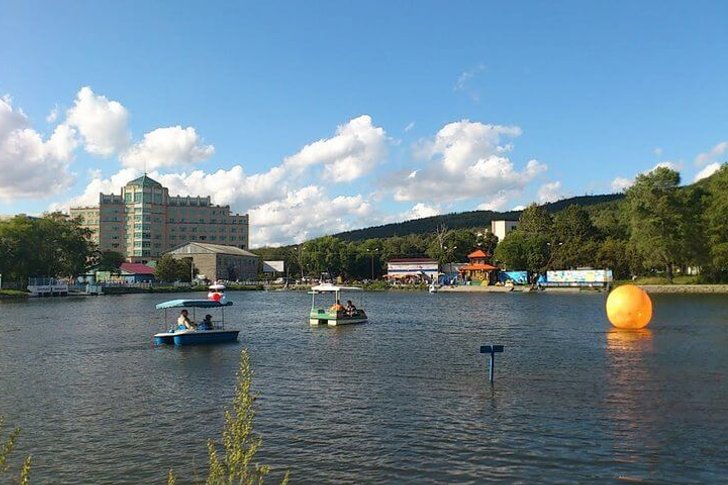
Chekhov Peak
Chekhov Peak is over 1000 meters high and is one of the highest peaks on the island. During the reign of the Japanese, a temple house was built on the top, which is still there. A hiking trail leads up the mountain, in some places equipped with ropes and marked with signs. Rare animals live on the slopes of the peak, in some places there are thickets of bamboo and dwarf birch.
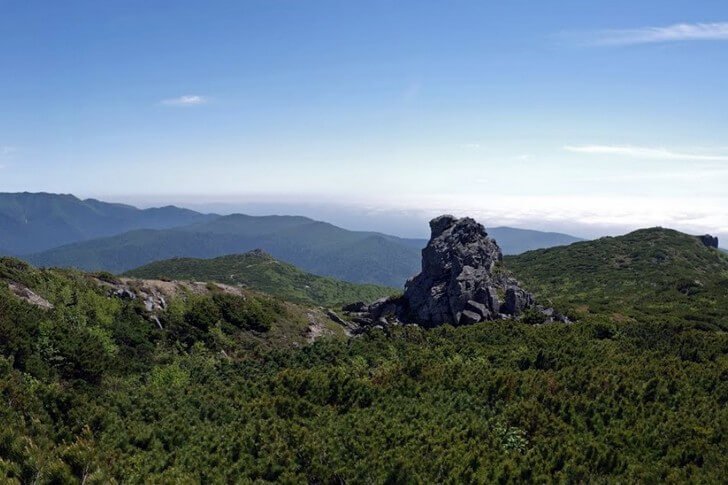
Mount Frog
The remains of the Frog is a natural place of power of the island, where representatives of the indigenous people of the Ainu performed their mysterious rites. It is located about 20 km from Yuzhno-Sakhalinsk near the village of Vestochka. The frog is included in the list of "seven wonders of Sakhalin", it is considered the local "good gin". Ayichka river flows nearby. People believe that its waters have healing properties.
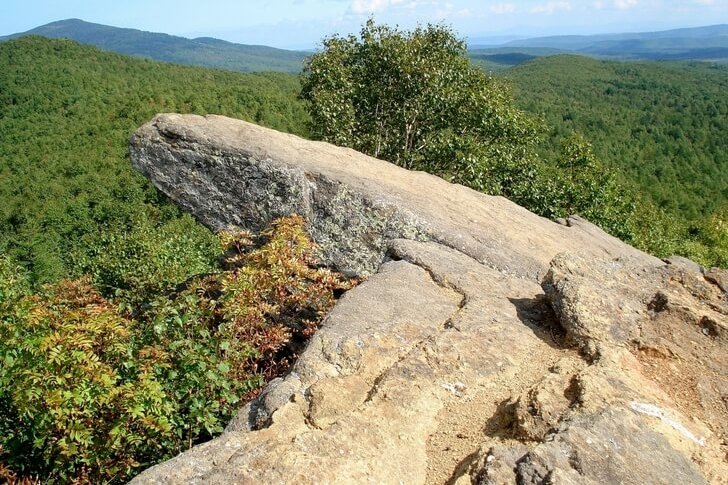
Lake Tunaicha
Natural reservoir with clean clear water, the second largest on the island. This is a unique monument of nature and a place of attraction for fishing enthusiasts (about 30 species of commercial fish live in the lake, including valuable salmon species). In the summer, lush greenery blooms around; in early autumn, a rich harvest of berries ripens on the banks. Tunaicha is connected to the Sea of Okhotsk through a narrow strait.
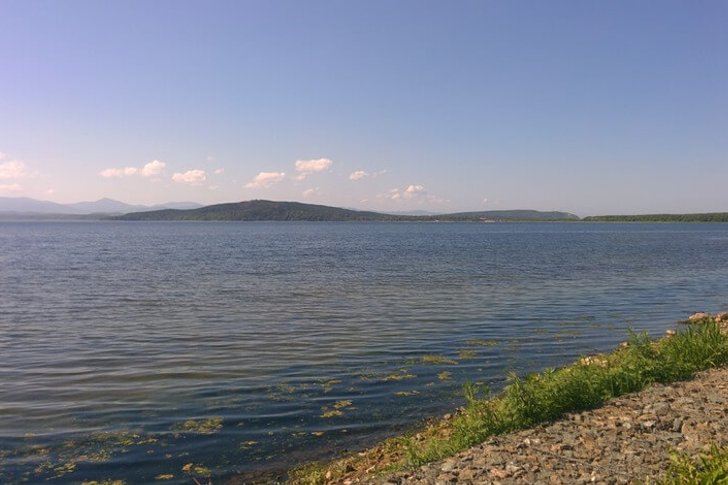
Cape Giant
One of the most beautiful places on the coast, which is a coastal cliff covered with green grass. On the edge of the cape, nature has created bizarre stone arches, which are chosen by noisy seagulls. Near the rock there is a narrow strip of sandy beach. If you manage to get here in July-August, you can witness an amazing natural phenomenon - the spawning of Pacific salmon.
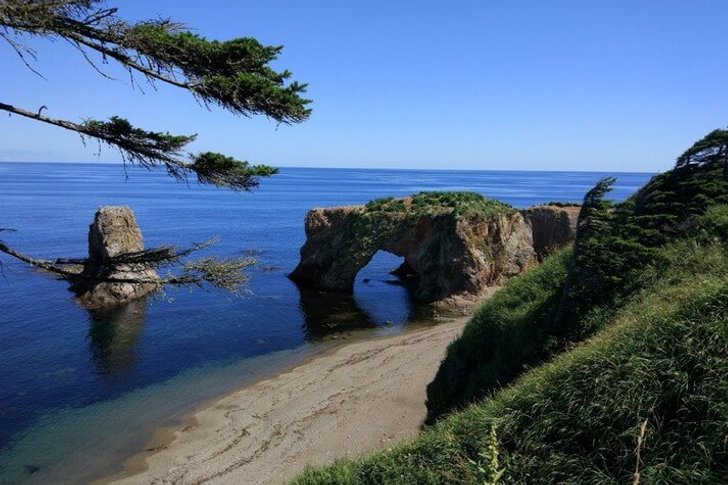
Cape Crillon
Cape Crillon is the southernmost point of Sakhalin, named after the French general. It is quite difficult to get here off-road, but the magnificent nature is worth it. There is rarely good weather on the cape, since the cold current of the Sea of \u200b\u200bOkhotsk joins the warm current of the Tatar Strait here. Rare visitors are greeted by stormy winds and rain, which really creates the feeling that this place is the real end of the Earth.
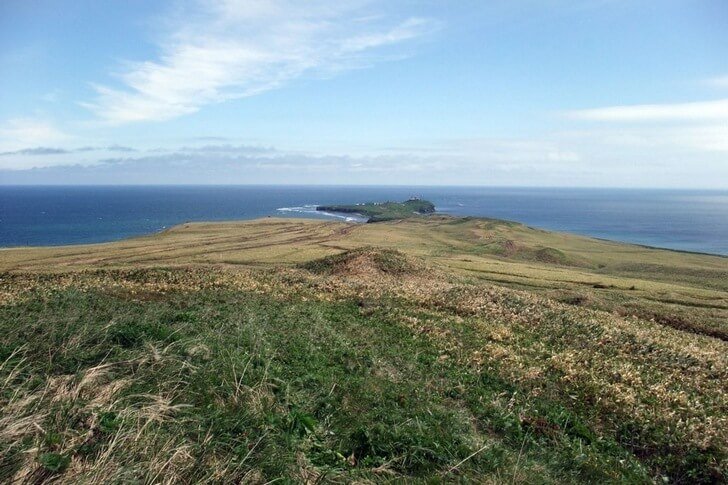
Cape and lighthouse Aniva
The narrow and rocky Cape Aniva is located in the southeastern part of Sakhalin. It resembles a huge stone ship, with difficulty overcoming the raging waters of the Pacific Ocean. In the 1930s, under the guidance of a Japanese architect, a lighthouse was built on the rocks in order to somehow reduce the number of shipwrecks. A little later, a village appeared nearby. Currently, the object and the settlement are abandoned.
